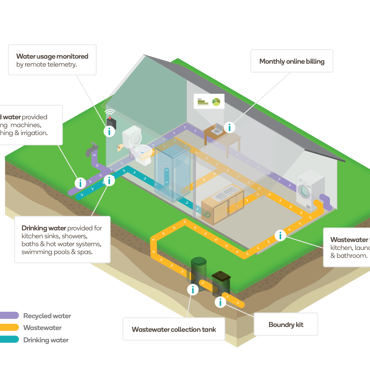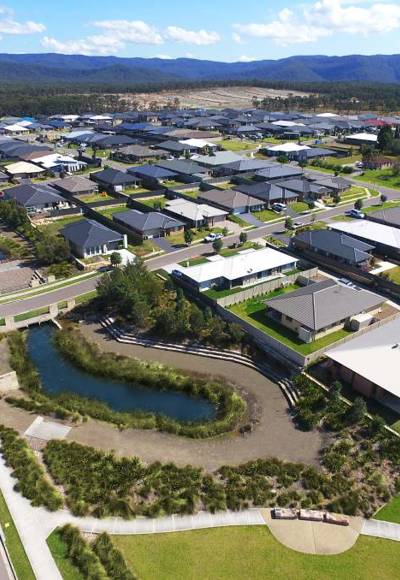When our water cycle is in balance, we all win.
An unbalanced water system is the result of poor stormwater management, too much waste water and low recycled water use.
Stormwater can really upset the balance and have significant environmental and cost implications. It’s not part of our water supply and doesn’t belong in our treatment loop. So, when stormwater leaks into our network, we need more resources to discharge it or to treat it.
Treated water is the other half of the equation: how we use recycled water in our community also impacts on the balance. If we’re not actively using recycled water in our communities, all excess water has to be discharged onto undeveloped land and is wasted.
And by not putting the treated water to good use, this inevitably means we’re using our drinking water at a much higher rate.
So how do we achieve a balanced water system? Firstly, we need recycled water resources to be used for more where drinking water isn’t required – for tasks like watering the garden, washing the car and doing laundry.
On the wastewater end of the cycle, we can minimise the water going into the system by simply using the drinking water in a conscious way – for example taking shorter showers, turning off taps when not needed, and using the dishwasher at its full capacity.
Additionally, if we can avoid stormwater leaking into the system – often caused by faulty or illegal pipework – we can reduce the strain on water processing resources and minimise wastage to achieve a good equilibrium.
A balanced water cycle means a brighter tomorrow for everyone.


 my account
my account pay my bill
pay my bill outages
outages contact us
contact us about us
about us our communities
our communities data solutions
data solutions sustainability
sustainability news
news







